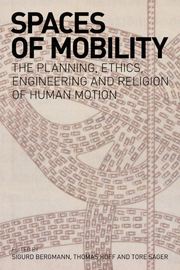Preface
Summary
The imprint of increasing mobility in a globalizing world is so profound that it calls for an analysis far beyond the forums of established academic disciplines. Only a truly interdisciplinary and transdisciplinary research approach can do justice to the complexity of problems emerging in the spaces of mobility.
The authors of this book have chosen not only to emphasize mobility as a social problem, but to reflect it in a broader sense. The title ‘Spaces of Mobility’ was chosen to reflect the insight that nearly all modern and late-modern systems for the movement of people and goods are technically constructed and that they create spaces and places with specific qualities.
Given this perspective, it is meaningful to emphasize both the social (including the economic and political) implications of mobility and the ideologies and practices that influence the design, production and distribution of artefacts for mobility. And because ‘mobilities’ – that is, different modes of technically aided movement – are products of humans, this means that the human dimension of mobility also needs to be mined more deeply. Mobilities never occur in an empty space, but human moveability and motion are always a part of our natural and built environments. Along with the sociological and human dimensions of mobility, its spatial, environmental dimension must also be taken seriously.
- Type
- Chapter
- Information
- Spaces of MobilityThe Planning, Ethics, Engineering and Religion of Human Motion, pp. xiii - xxPublisher: Acumen PublishingPrint publication year: 2008



